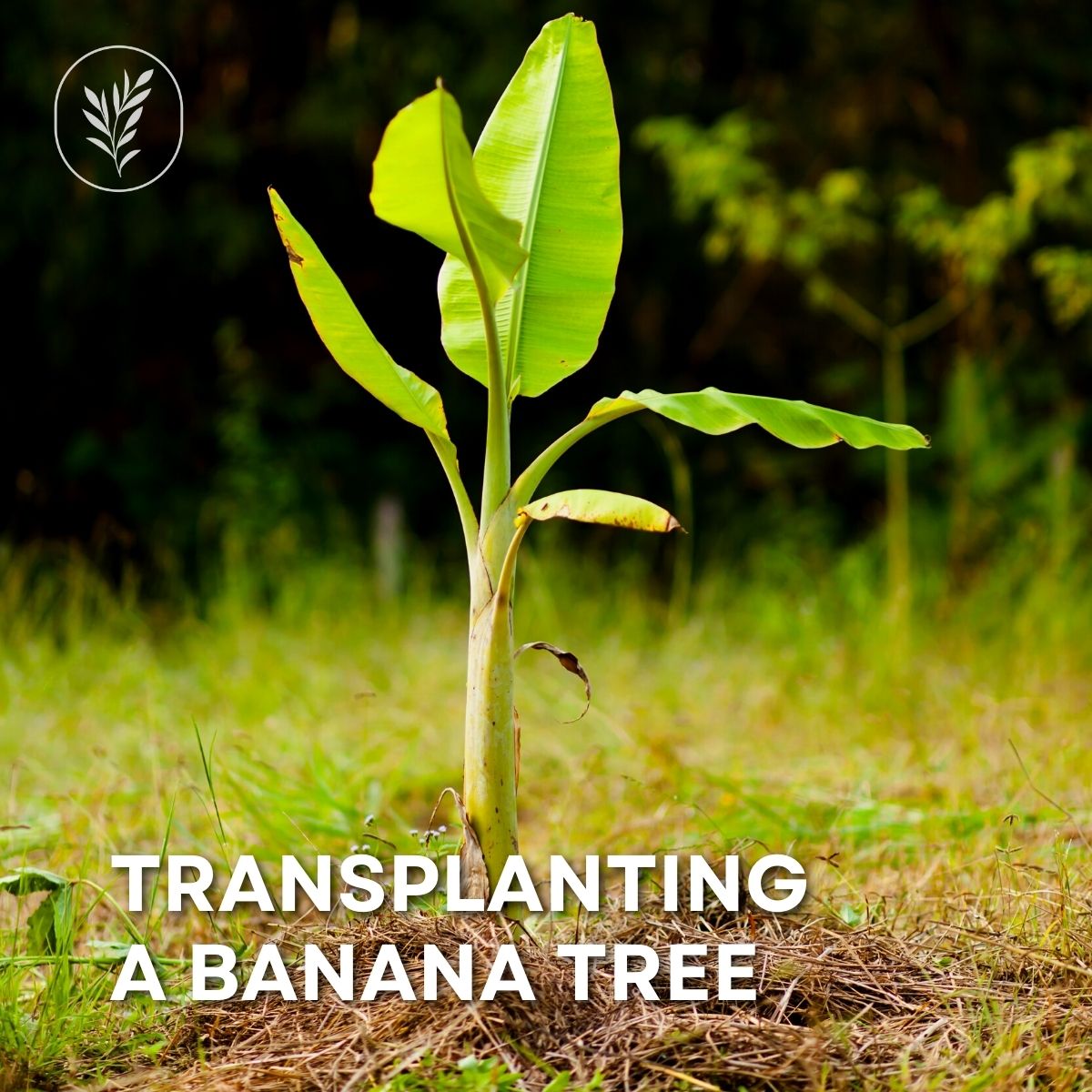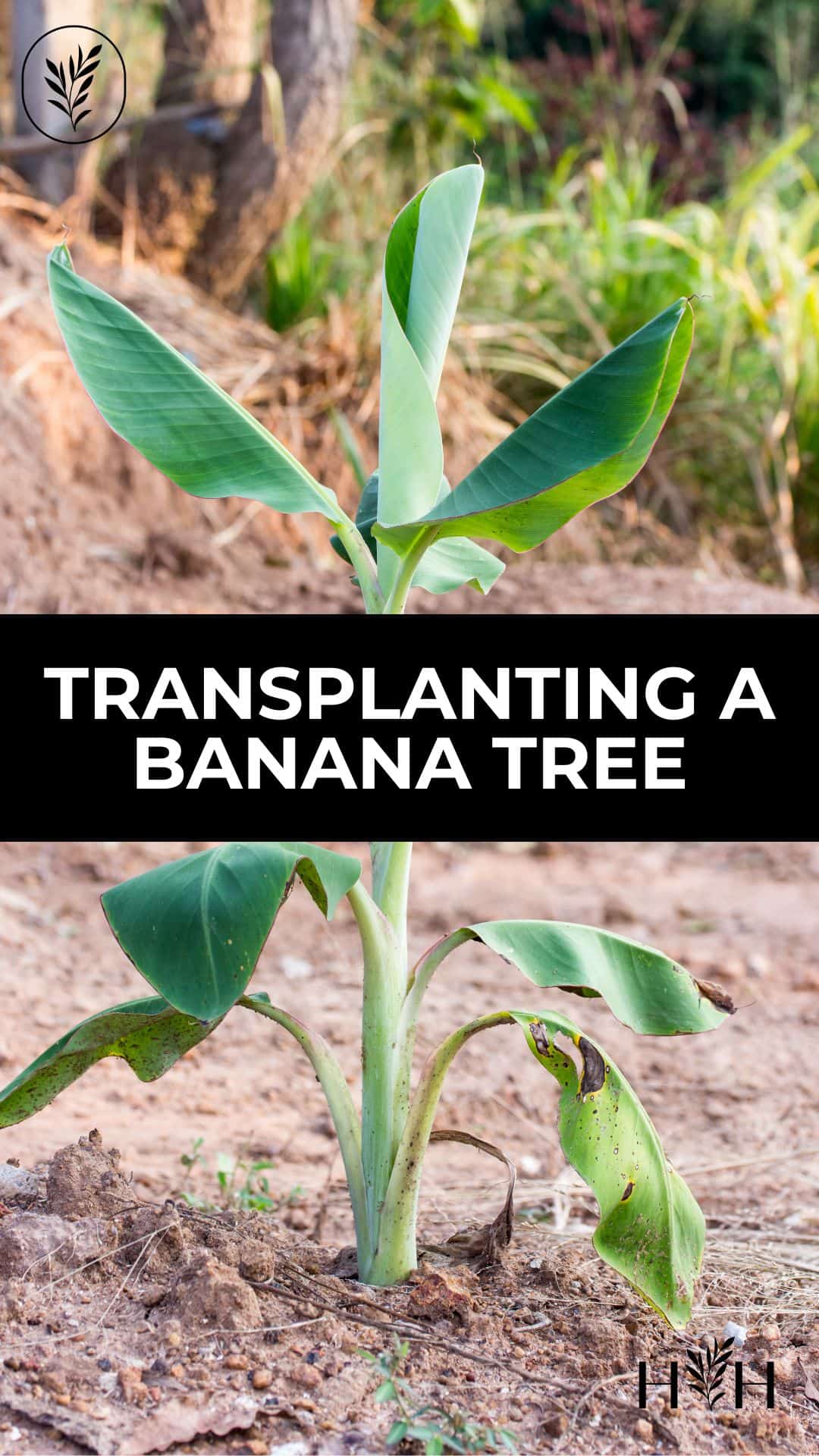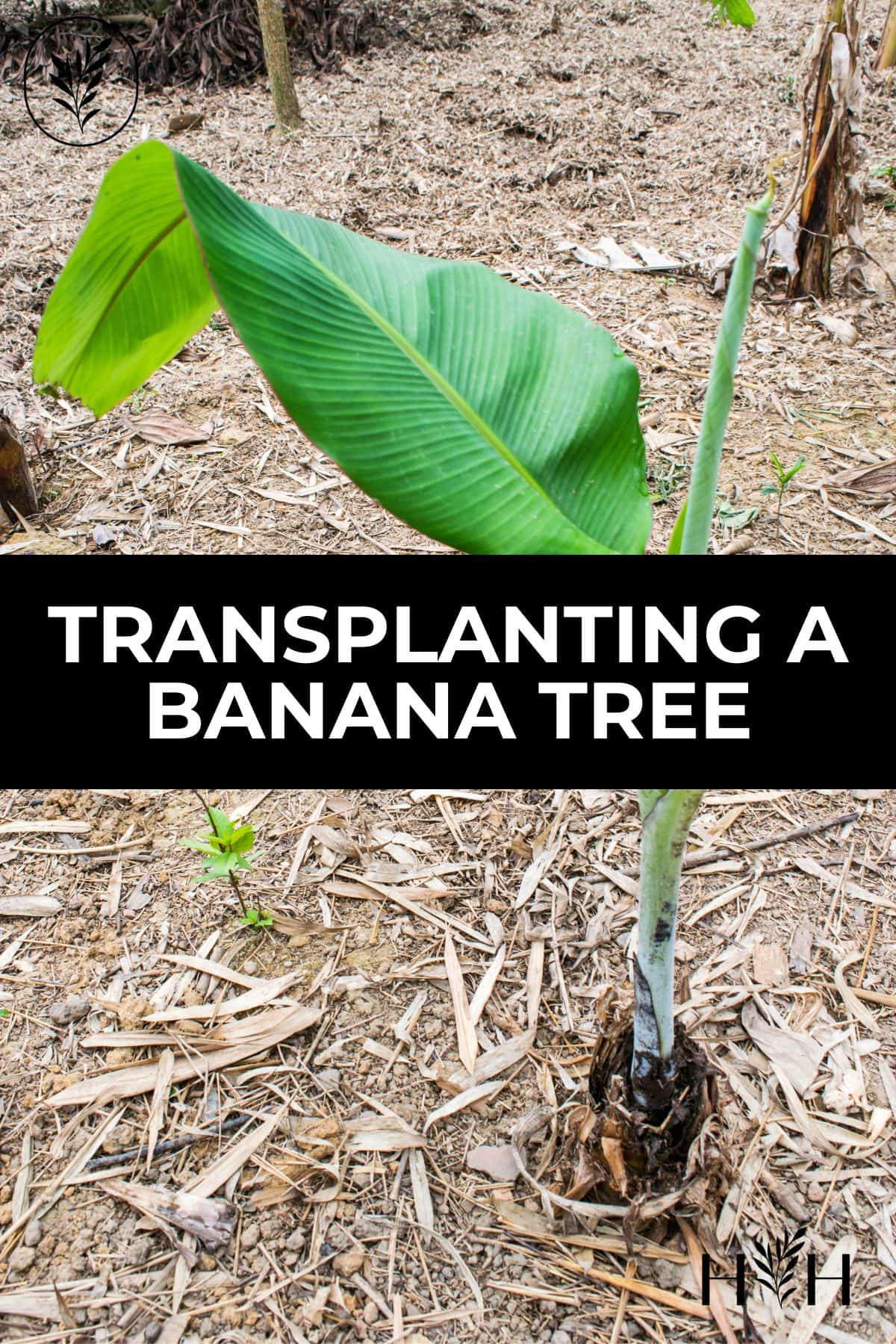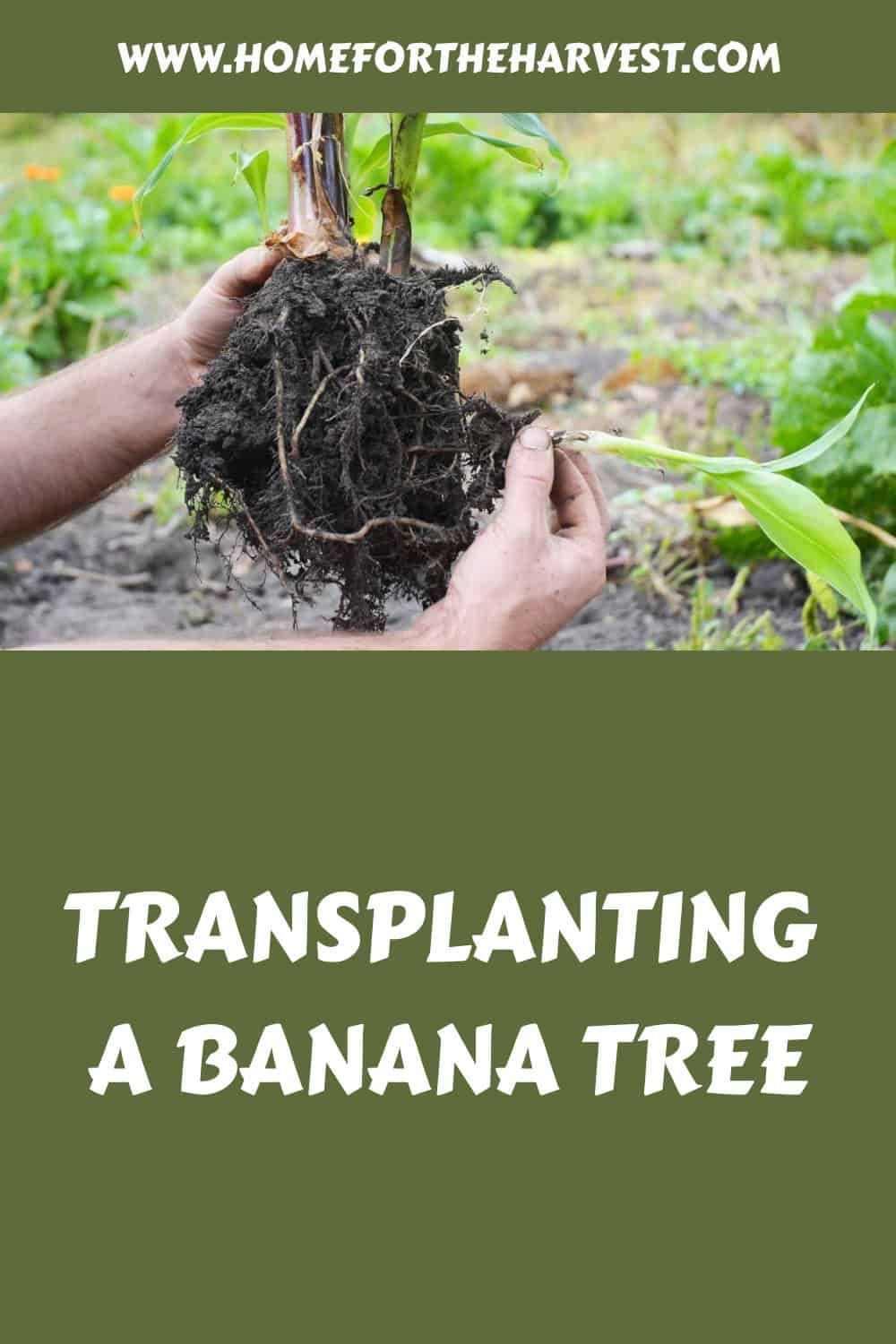Transplanting a banana tree takes patience and preparation, but the end result of your hard work will leave you with beautiful foliage in no time at all. With our guide on how best to prepare, transplant and care for your new addition – plus what benefits come from doing so – we’ll help make sure that when it comes time to transplant your beloved banana tree everything goes smoothly.
Transplanting a banana tree
Transplanting a banana tree is an easy way to add tropical flair to your garden. Whether you’re starting from scratch or moving an existing plant, the process of transplanting a banana tree can be done with relative ease. The key is knowing where and how to plant it for optimal growth and health.
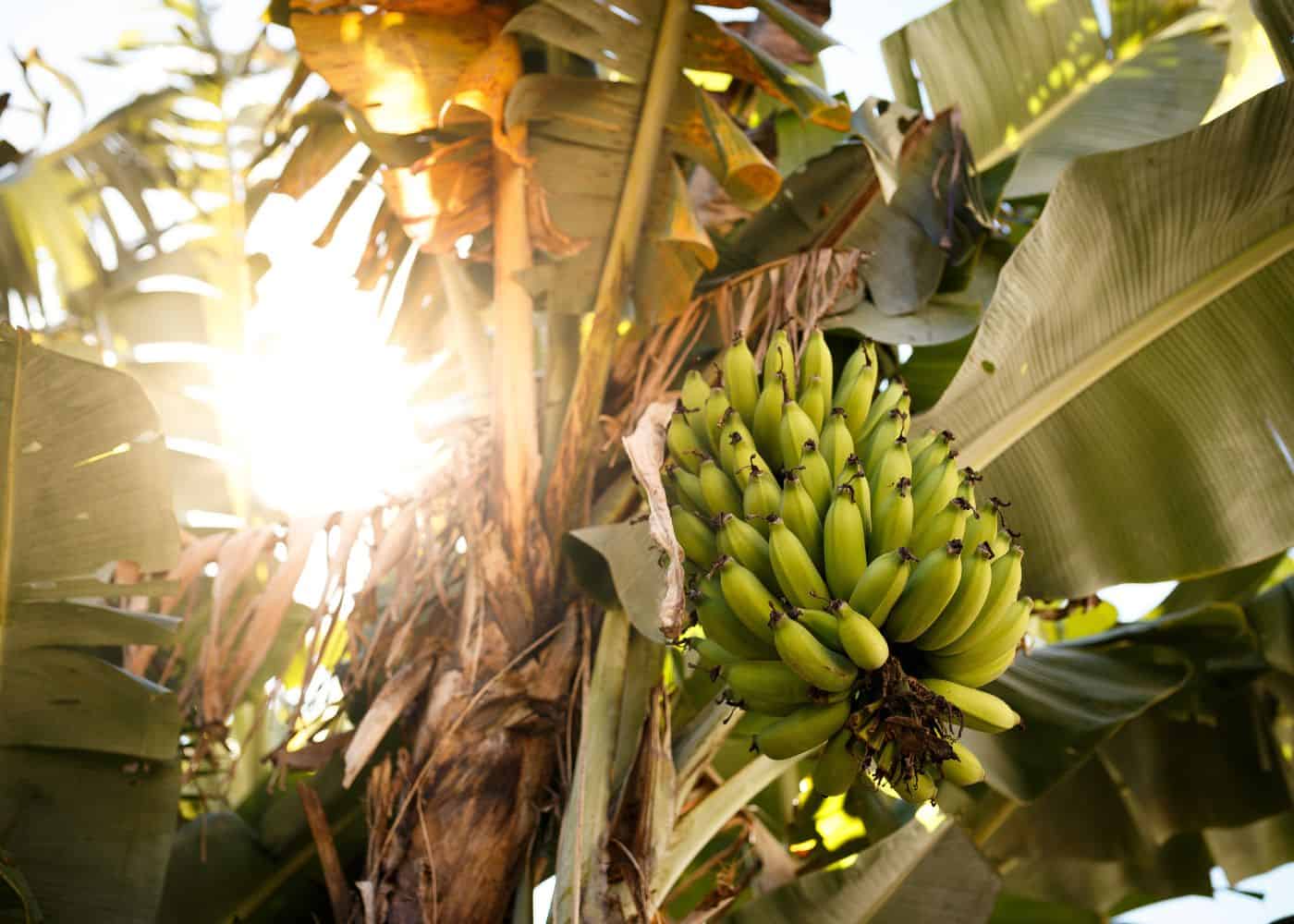
1. Choosing a planting location
When selecting a spot for your banana tree, make sure it gets plenty of sunlight (at least six hours per day). Bananas prefer soil that drains well, so avoid areas prone to standing water or flooding.
If possible, choose an area sheltered from strong winds which can damage the leaves and fruit stalks. If you live in a climate with freezing winters, you’ll need to arrange to move the trees indoors during inclement cold weather.
2. Preparation before the transplanting process
Before planting your banana tree, dig a hole twice as wide as the root ball but only slightly deeper than its current depth in its potting container. You can mix some organic compost into the bottom of the hole before setting in the root ball; this will help provide nutrients for healthy growth over time.
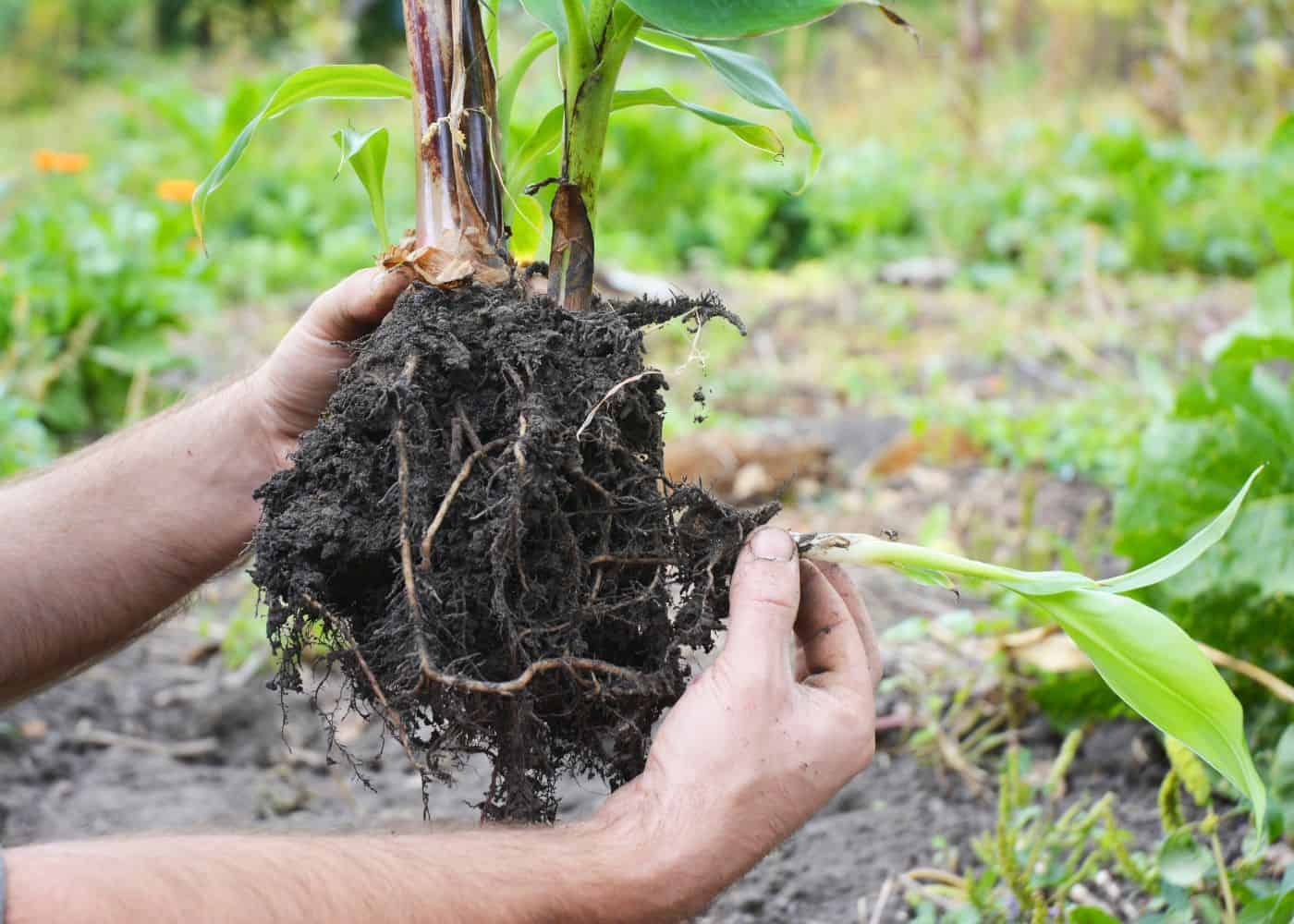
3. Transplanting the plant
Gently remove any excess dirt around the roots then place it carefully into its new home in your garden bed or container (if using one). Backfill with more compost if needed until all roots are covered then tamp down lightly with your hands to ensure good contact between soil and roots without compressing them too much which could cause air pockets that inhibit growth later on down the line Finally, give it a generous drink of water – about 2-3 gallons should do – so that everything settles nicely around those newly transplanted roots.
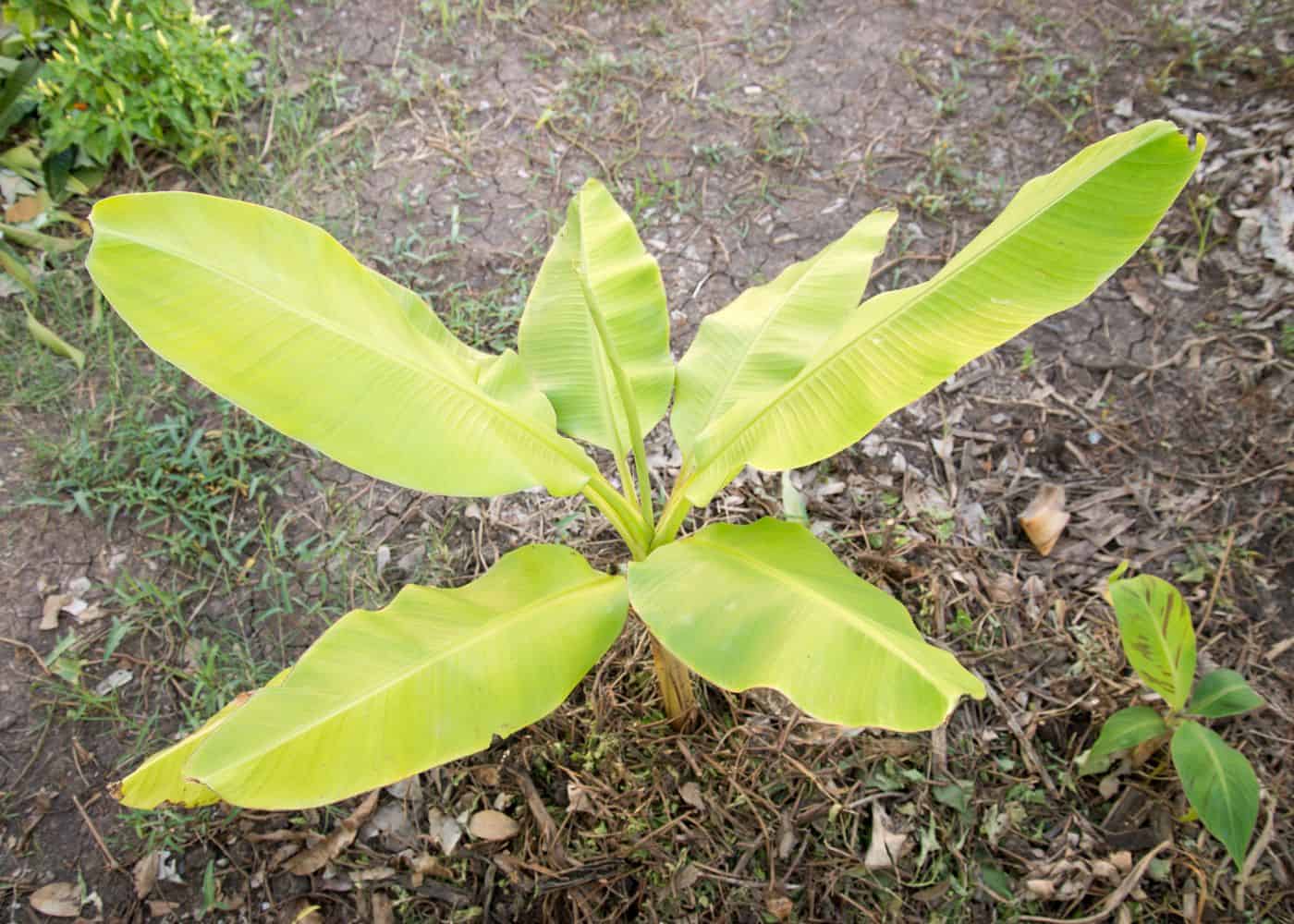
4. Aftercare
To keep your banana tree happy and healthy after transplanting, make sure you keep up regular watering (about once every two weeks) during dry spells while avoiding overwatering at all costs – bananas don’t like wet feet. Fertilize monthly during active growing seasons using organic fertilizer such as fish emulsion or seaweed extract mixed according to package instructions; this will help promote lush foliage production throughout summer months when temperatures are warmest. Lastly, prune off any dead fronds or damaged stems periodically throughout the year keeping overall shape neat & tidy looking while encouraging further branching outwards from main trunk structure itself.
Planting location
Banana trees are a great addition to any garden. They provide an abundance of delicious fruit and add a tropical feel to your outdoor space. But before you can enjoy the fruits of your labor, it’s important to choose the right location for planting.
When selecting a spot for your banana tree, look for one that receives plenty of sunlight throughout the day – at least 6-8 hours per day is ideal. The soil should be well-draining and slightly acidic with a pH between 5.5 and 7.0; if needed, you can amend the soil with organic matter such as compost or peat moss to improve drainage and acidity levels.
Additionally, make sure there is enough room around the plant so that its roots have ample space to spread out without being crowded by other plants or structures in the area. Banana tree roots can easily extend beyond 10-15 wide as the rhizomes spread underground, so plan accordingly.
It’s also important to consider how much wind exposure your banana tree will get when deciding on its location; too much wind can damage leaves and cause them to dry out quickly which could lead to disease or death of the plant over time. If possible, try planting near taller plants or walls that can act as natural windbreaks while still allowing adequate air circulation around all sides of the tree itself.
Finally, keep in mind that banana trees are tropical plants which means they prefer warm temperatures year-round; avoid areas where cold winter weather may be present since this could harm their growth potential significantly over time (especially if temperatures dip below 40 degrees Fahrenheit).
By taking these factors into consideration when choosing where to plant your banana tree, you will ensure it has everything it needs from sun exposure and proper soil conditions, as well as protection from harsh winds. This will give the tree an optimal chance at success.
Once you have identified the perfect location for your banana tree, it’s time to prepare the soil and begin planting.
Preparation
Before transplanting a banana tree, it is important to properly prepare the area. Start by selecting an appropriate location for your banana tree. Choose a spot that receives full sun and has well-draining soil. The hole should be twice as wide as the root ball of the plant and at least 12 inches deep.
Once you have chosen a suitable location, begin digging the hole for your banana tree. Digging with a shovel or spade will help loosen up any compacted soil in the area and make it easier to work with when planting your banana tree. If needed, amend the soil with compost or fertilizer to ensure proper nutrition for your new plant.
Finally, water generously after planting to help settle everything down around it securely into place. Do not forget about drainage, as this is essential for the health of your banana tree, so watch to see that the water drains into the soil easily rather than making a puddle for hours.
Once you have thoroughly prepared the area for transplanting, it’s time to get your hands dirty and move on to the next step: transplanting your banana tree.
Transplanting
Carefully remove your banana tree from its pot by turning it upside down and gently tapping on the bottom until it slides out easily. If necessary, use pruning shears or scissors to cut away any roots that are growing around or through drainage holes at the base of the pot. Once removed from its container, inspect its root system for any signs of disease or damage; if present, trim away affected areas before planting in order to prevent the further spread of infection.
Now you can place your banana tree into its new home. Place it in the center of the prepared hole so that the top edge of the root ball sits level with the surrounding ground surface; fill the remaining space around the sides with amended soil mixture and lightly tamp down using hands or feet (but be careful not to compact too much). Water thoroughly after transplanting—this helps settle soil around roots while also providing the moisture needed for the recovery period ahead.
Once planted, keep an eye on your newly transplanted banana tree over the next few weeks. Water regularly but don’t overwater; provide additional support if needed (stakes work great); mulch around the base to help retain moisture levels during hot summer months; apply fertilizer every other month throughout the growing season to ensure healthy growth overall. With proper care and attention given during this time frame, soon enough you will have lush green foliage thriving happily outdoors.
Once the banana tree is transplanted, it’s important to give it plenty of attention and care in order to ensure its successful growth; this includes proper watering, sunlight, and fertilizing. Now that the transplanting process is complete, let’s look at what steps need to be taken for aftercare.
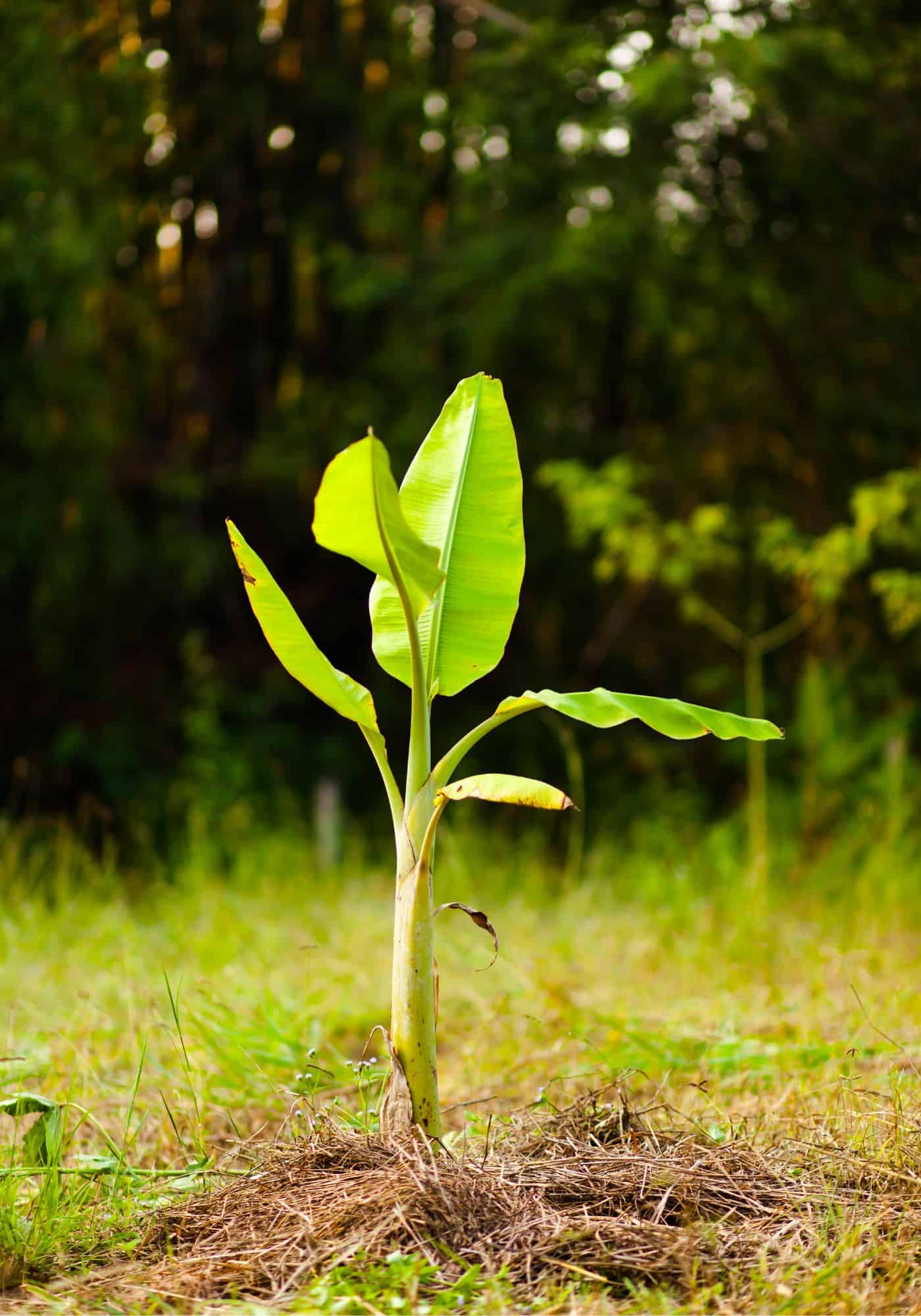
Aftercare
After planting your new banana plant, be sure to water it regularly, feed it with tropical tree fertilizer, and remove any dead leaves.
Watering
After transplanting a banana tree, it is important to water regularly. This helps the roots establish themselves in their new environment and encourages healthy growth. Water deeply but not too often – aim for about once per week or when the top few inches of soil are dry. If you live in an area with hot summers, consider adding mulch around the base of your banana tree to help retain moisture and reduce evaporation from the soil surface.
Fertilizing
Banana trees need plenty of nutrients to thrive, so fertilize them every two months during spring and summer using a balanced fertilizer that’s high in nitrogen and potassium. Avoid overfertilizing; too much can burn your plant’s delicate root system.
Pruning
Pruning isn’t necessary for most banana trees unless they become overly large or unruly looking. If pruning is needed, wait until late winter or early spring before cutting back any branches or leaves that have grown beyond what you’d like them to be. Use sharp shears or scissors when pruning; never pull on branches as this can damage the bark and cause disease problems down the line.
Most types of banana trees won’t survive temperatures below freezing, so if you live in an area where cold weather is common it is important to take steps to protect your plants from frost damage during winter months. Cover young plants with blankets at night if temperatures dip below 32°F (0°C), and consider planting more hardy varieties such as Musa basjoo which can tolerate colder climates better than other species do.
It is important to remember that proper aftercare for a banana tree transplant is essential in ensuring its successful growth; however, the benefits of having a healthy banana tree are even more rewarding.
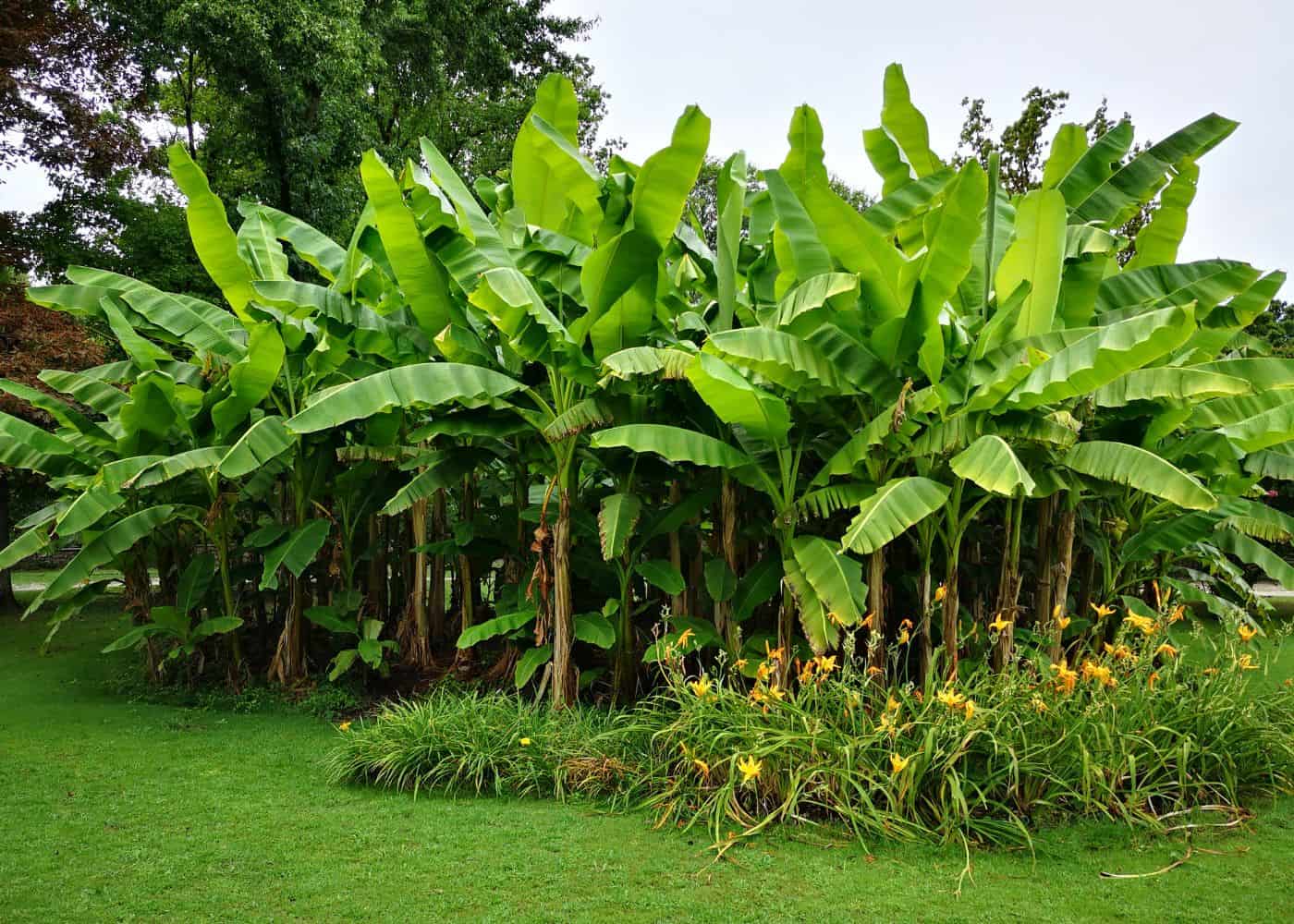
Benefits
By transplanting, you are giving the plant more space to grow, allowing it to spread its roots and increase its access to nutrients in the soil. This increased access can lead to larger leaves, bigger fruits, and overall healthier plants.
In addition, when transplanting a banana tree you have an opportunity to prune off any dead or damaged branches that may be hindering growth. Pruning helps promote new branch development which will help with future harvests as well as improve air circulation around the plant for better photosynthesis efficiency.
Another benefit of transplanting is that it gives you an opportunity to reposition your banana trees if they’re not getting enough sunlight or too much shade from nearby trees or buildings. Repositioning them in areas where they get more direct sunlight can help them thrive even further by providing additional energy for their growth process.
FAQs when transplanting a banana tree
How do you dig up a small banana tree?
Digging up a small banana tree (called a “pup”) is not difficult, but it does require some care. Start by loosening the soil around the base of the tree with a garden fork or spade.
Gently lift and wiggle the trunk to loosen any roots that may be holding it in place. Once loose, carefully pull out the entire root ball from its hole and set aside for replanting later. If necessary, use pruning shears to cut away any remaining roots before lifting out of the ground.
Before you go…
Not only will you have an attractive and unique addition to your landscape, but you’ll also enjoy the delicious fruits of your labor. With careful preparation and attention to detail during the transplanting process, you can ensure that your banana tree thrives in its new home.
Resources
- How fast does a banana tree grow?
- When do banana trees bear fruit?
- How do banana trees grow?
- Should you cut dead leaves off banana trees?
- How to plant a banana tree in 4 easy steps?
- How to fertilize banana trees for high yields?
- How to prune banana trees?
References
- Stewart, M. (2022, November 7). How to Care for a Banana Leaf Plant, Which Will Add Tropical Flair and Color to Sunny Rooms in Your Home. Martha Stewart. Retrieved February 17, 2023, from https://www.marthastewart.com/8335768/how-to-care-for-banana-leaf-plant
- Bous, S. (2022, October 18). How to Grow and Care for a Banana Plant Indoors. Better Homes & Gardens. https://www.bhg.com/gardening/houseplants/care/how-to-grow-a-banana-plant-indoors/
- Cape, M. (2019). How to Grow Banana Plants Like a Professional: Beginner’s Guide and Tips to Get You Started. Independently Published.
- Soluri, J. (2021). Banana Cultures: Agriculture, Consumption, and Environmental Change in Honduras and the United States. University of Texas Press.
- Turner, D. W. (2005). Banana Root System: Towards a better understanding for its productive management. Bioversity International.
Need more info?
Are you interested in learning more about transplanting a banana tree? Here are our best articles about it!


